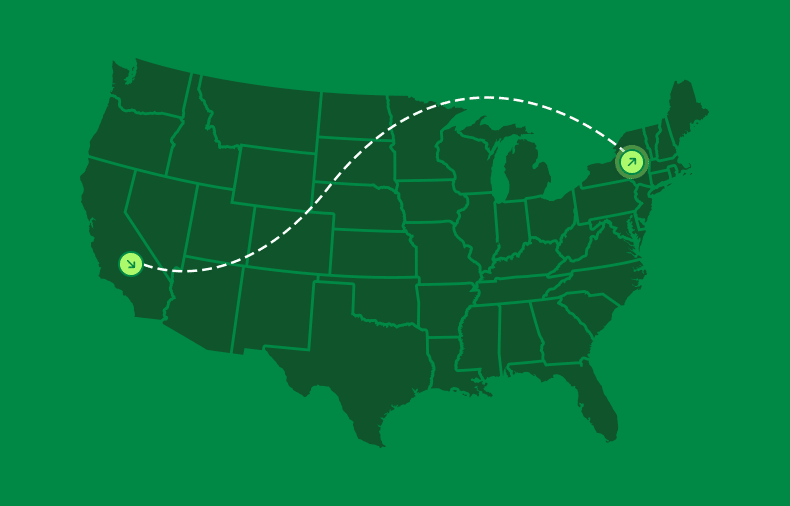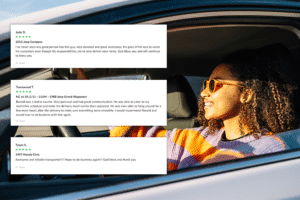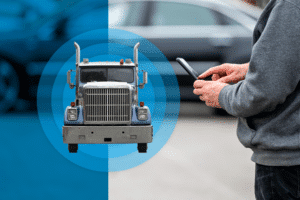Whether you’re chasing sunshine, starting a new job, or heading west for a fresh start, relocating from New York to California is a bold move, and your car needs to make the journey too. But should you drive it yourself nearly 2,900 miles? Or is it smarter to hire a professional auto transport company?
Let’s be honest: a road trip sounds fun in theory. In reality, it’s four to five days of driving, hotel hopping, gas station pit stops, and highway fatigue. Add in costs, time away from work, and the wear and tear on your vehicle, and it’s clear why many are choosing to ship their cars instead.
In this guide, you’ll get the full breakdown of car shipping costs from New York to California, with clear insights into pricing factors, seasonal fluctuations, transport options, and ways to save. By the end, you’ll know exactly what to expect—and how to budget for it.
THE TRUE COST OF DRIVING COAST TO COAST
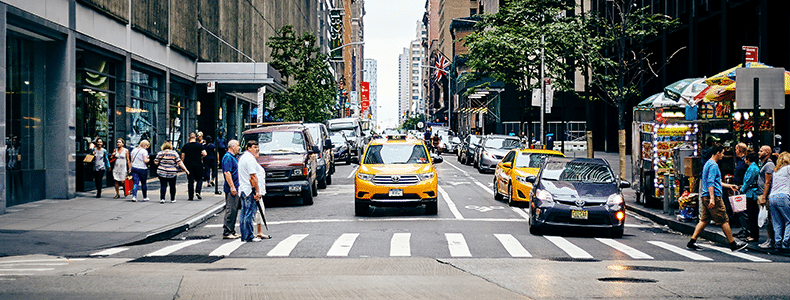
Before we discuss shipping, let’s consider the cost of driving from NY to CA.
- Distance: 2,800–2,900 miles
- Driving time: 44–46 hours
- Gas: $350–450, depending on fuel efficiency
- Hotels: 4 nights × $100–150 = $400–600
- Meals: 5 days × $40–60 = $200–300
- Oil change/tire wear: $100–200
- Time away from work/family: 4–5 days
That’s $1,050 to $1,550, not including depreciation from adding thousands of miles to your odometer. If your time is valuable, or if you’re trying to minimize vehicle stress, shipping becomes the clear winner.
AVERAGE COST TO SHIP A CAR FROM NEW YORK TO CALIFORNIA
Car shipping costs from NY to CA typically range from $1,400 to $2,400, depending on the type of vehicle, transport method, time of year, and your pickup/delivery preferences.
Common Pricing Ranges
| Vehicle Type | Transport Method | Estimated Cost |
|---|---|---|
| Standard Sedan | Open Carrier | $1,400 – $1,800 |
| SUV or Truck | Open Carrier | $1,600 – $1,950 |
| Luxury Vehicle | Enclosed Carrier | $1,800 – $2,400 |
| Classic/Exotic | Enclosed Carrier | $2,000 – $2,800+ |
These numbers vary based on availability, gas prices, weather conditions, and even your pickup ZIP code.
REAL-WORLD EXAMPLES
- 2020 Honda Accord via open transport from Brooklyn to Los Angeles: $1,500
- Same vehicle enclosed: $1,850 – $1,950
- 2022 BMW X5 enclosed from Manhattan to San Francisco: $2,100
- 1967 Ford Mustang (non-running): $2,300 – $2,800 due to specialty handling
FACTORS THAT AFFECT YOUR SHIPPING COST
1. Transport Type: Open vs. Enclosed
Open carriers are the standard choice and are significantly cheaper. These are the large, double-decker trailers you see on highways. They’re ideal for most sedans and SUVs.
Enclosed carriers offer protection from weather, debris, and road hazards—perfect for luxury or classic cars. But they’ll cost you 30% to 60% more.
2. Vehicle Size and Weight
Larger, heavier vehicles take up more space and weight capacity on a trailer, leading to higher prices. Expect to pay $150 to $300 more for trucks, SUVs, or vans.
3. Vehicle Condition
If your car doesn’t run, you’ll need a carrier equipped with winches or forklifts. Non-operable vehicles can add $150 to $300 to your total cost.
4. Modifications
Lift kits, oversized tires, lowered suspensions, or rooftop racks may require special accommodations, driving up your rate.
5. Pickup and Drop-Off Locations
Metropolitan pickups (e.g., Manhattan or Downtown LA) are cheaper than remote or rural locations. Limited access areas—like gated communities or apartment complexes—can trigger additional fees of $50 to $200.
Terminal-to-terminal service is cheaper but less convenient. Door-to-door adds about $100 to $200 but saves time and effort.
6. Seasonal Demand
Summer (May–August) and early fall are the most expensive times to ship due to high demand. Rates can spike by 15% to 25% during this window.
Winter (November–February) tends to have lower prices but comes with weather risks and possible delays. If you’re not in a rush, late fall or early spring can be a sweet spot for savings.
POPULAR ROUTES FROM NY TO CA
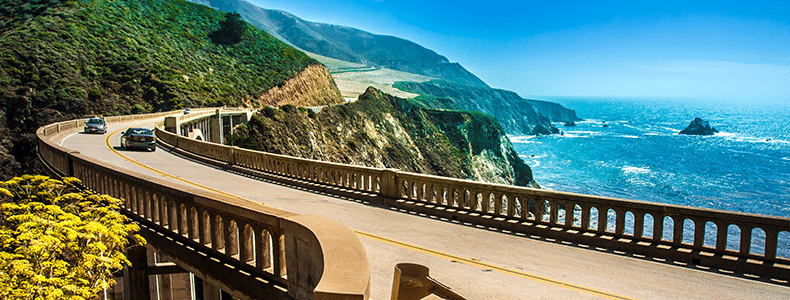
Most carriers follow one of these interstate corridors, and your route can influence pricing based on traffic flow and weather:
| Route Type | Highway | Seasonality & Weather Impact |
|---|---|---|
| Central Route | I-80 | Moderate weather, year-round availability |
| Southern Route | I-40 | Longer distance, milder winter conditions |
| Northern Route | I-90 | Shorter but snow-prone in winter |
Sticking to the central route (I-80) is typically the most cost-efficient and direct.
EXTRA FEES TO WATCH FOR
Shipping quotes often leave out these hidden costs. Always ask what’s included.
- Fuel surcharges: $50 – $150
- Expedited delivery: $200 – $500 to shave off 2–4 days
- Rush (1–3 days): Up to $1,000 for ultra-fast shipping
- Insurance upgrades: 1–3% of your vehicle’s declared value
- Inspection reports: $25 – $75 for before-and-after documentation
INSURANCE & PROTECTION
All carriers are legally required to carry cargo insurance. Basic policies usually cover up to $100,000, but that may not be enough for luxury or classic vehicles.
Upgrade Options
- Gap coverage: Fills the gap between standard policy and full value
- Declared value: Lets you set the insured value of your vehicle
- Property damage protection: If pickup/delivery causes damage to your home or business, uShip offers coverage up to $10,000 as an add-on
Always get a certificate of insurance and confirm coverage in writing before your car is loaded.
HOW TO GET THE BEST PRICE
✅ Book in Advance
Booking 4–6 weeks ahead can save $200–$400 compared to last-minute rates. You’ll also get better carrier and date options.
✅ Be Flexible
Give a 3–7 day window for pickup and delivery. This allows carriers to combine loads and pass on cost savings.
✅ Compare All-Inclusive Quotes
Don’t get lured by the lowest base price. Look for binding quotes that include fuel, insurance, and all fees. A realistic quote that’s $100 more could end up saving you from hundreds in surprise charges later.
✅ Avoid High-Pressure Sales
If someone demands a deposit before sharing a contract or seems evasive about licensing, walk away. Reliable carriers will be transparent.
RED FLAGS TO WATCH FOR
- Prices way below market averages
- Large upfront deposits
- No license or DOT number
- Vague or missing insurance info
- Pushy sales tactics
- No physical business address
A little due diligence can save you from a shipping nightmare.
BOOKING TIMELINE BREAKDOWN
| Time Before Move | Pricing Impact | Carrier Options |
|---|---|---|
| 4–6 weeks | Best rates | Full availability |
| 2–3 weeks | Good rates | Moderate availability |
| 1 week | Higher rates | Fewer options |
| <1 week | Premium rates | Very limited |
FINAL THOUGHTS: IS SHIPPING WORTH IT?
If you’re moving across the country, shipping your car is often the smarter, safer, and less stressful option. It helps you:
- Avoid adding 2,900 miles of wear and tear
- Save time, energy, and PTO
- Arrive fresh and ready to start your next chapter
Whether you’re transporting a daily driver or a prized collector’s vehicle, a professional carrier gives you peace of mind—and in many cases, actually saves you money compared to a DIY drive.
KEY TAKEAWAYS
- Average cost: $1,400 – $2,400 depending on vehicle and service level
- Open carriers are economical; enclosed is best for high-value vehicles
- Booking early and staying flexible reduces costs
- Read the fine print and get insurance confirmed in writing
- Avoid red flags and always compare quotes from licensed carriers
PEOPLE ALSO ASK
How much does it cost to ship a car from New York to California?
Standard vehicles on open carriers usually cost $1,400–$1,800. Luxury cars on enclosed carriers may run $1,800–$2,400 or more.
How long does it take to ship a car from NY to CA?
Typical transit time is 7–10 days. Expedited shipping can reduce that to 4–6 days.
Is it safe to ship a car across the country?
Yes. When you use a licensed, insured carrier, damage is rare. For added protection, consider gap or declared value coverage.
What’s the cheapest way to ship a car across the U.S.?
Choose open transport, terminal-to-terminal service, and book at least 4 weeks in advance. Be flexible with your dates to get the best rates.
